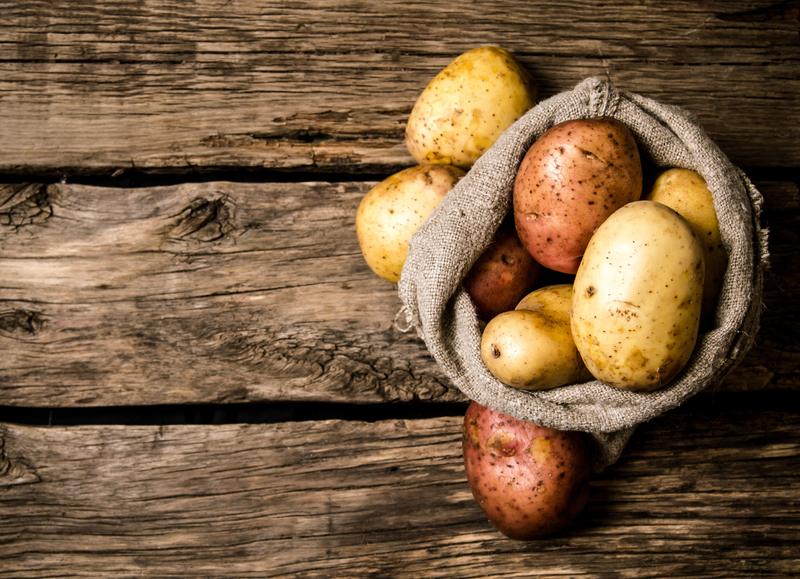Best Period to Start Fertilization Consideration
Posted on 28/01/2025
Fertilization is a pivotal component of agricultural practices that can significantly impact crop yield and soil health. Understanding the best period to start fertilization is crucial for optimizing plant growth and ensuring sustainable agricultural productivity. This article delves into various factors that influence the timing of fertilization, guidelines for different crops, and best practices to follow.
Understanding the Fertilization Process
Fertilization involves the addition of essential nutrients to the soil to support plant growth and development. The primary nutrients required by plants include nitrogen (N), phosphorus (P), and potassium (K), often referred to as NPK. Micronutrients such as magnesium, sulfur, and iron also play a significant role in the overall health of the plant.
Plants absorb these nutrients through their root system from the soil. Therefore, it is essential to know the nutrient content already present in the soil and the specific requirements of the crop to avoid under- or over-fertilization. Soil testing can help in determining the precise nutrient profile and needs.

Factors Influencing the Timing of Fertilization
Several factors need to be considered to determine the optimal timing for fertilization:
1. Crop Type and Growth Stage
The nutrient requirements of plants vary significantly across different growth stages. For instance:
- Seedling Stage: During the initial growth phase, crops usually require higher nitrogen levels to promote leaf and stem development.
- Flowering and Fruiting Stage: At this stage, phosphorus and potassium become crucial for the development of flowers, fruits, and seeds.
- Maturity: Towards maturity, the nutrient intake is reduced, and over-fertilization can lead to nutrient leaching and environmental damage.
2. Soil Health and Nutrient Profile
Soil health plays an essential role in determining the timing and quantity of fertilization. Regular soil testing is indispensable for understanding the current nutrient content and adjusting fertilization schedules accordingly. A balanced nutrient profile can prevent soil degradation and promote long-term soil fertility.
3. Climatic Conditions
Weather patterns and seasonal changes also influence the timing of fertilization. For example:
- Spring: This is generally the most favorable time for fertilization as it encourages vigorous growth at the beginning of the growing season.
- Rainy Season: Excess rainfall can lead to nutrient leaching, making it less effective. Fertilizing before heavy rains or in controlled irrigation conditions is advisable.
- Autumn: Fall fertilization helps in building soil nutrients for the next growing season, especially for perennial plants.
Region-Specific Guidelines
The best period to start fertilization also depends on the geographical and regional characteristics. Here are some insights:
1. Tropical Regions
In tropical areas, where there are usually two distinct seasons--wet and dry--the optimal time for fertilization is often at the end of the dry season, just before the onset of rains. This ensures that nutrients are readily available when plants start to grow vigorously with the availability of moisture.
2. Temperate Regions
In temperate zones, the growing season generally spans from spring to fall. Fertilization is best done during early spring when plants resume growth after the winter dormancy. Secondary fertilization can be carried out in mid-summer to boost nutrient availability during the growing peak.
3. Arid and Semi-Arid Regions
In these regions, water scarcity is a primary concern. Fertilization should be coordinated with irrigation schedules to optimize nutrient absorption and minimize waste. Split applications can be more efficient, providing nutrients in smaller, easily absorbable doses.
Best Practices for Successful Fertilization
The following best practices ensure successful and sustainable fertilization:
1. Soil Testing and Monitoring
Conduct soil tests before planning the fertilization schedule. Monitoring soil health at regular intervals helps in adjusting nutrient applications accurately. Soil testing kits and professional services are available for precise results.
2. Choosing the Right Fertilizers
Select fertilizers based on the specific nutrient requirements of the crops and soil conditions. Organic fertilizers, like compost and manure, can improve soil structure and fertility over time, while inorganic fertilizers offer concentrated nutrient doses for immediate uptake.
3. Application Techniques
Adopting the right application technique ensures even distribution and effective nutrient absorption. Common methods include:
- Broadcasting: Spread uniformly over the field.
- Banding: Placed in rows or bands near the plant roots.
- Foliar Application: Sprayed directly on plant leaves for quick absorption, often used for micronutrients.
4. Split Applications
Split applications involve dividing the total fertilizer requirement into multiple smaller doses applied at different growth stages. This method enhances nutrient utilization and minimizes losses due to leaching or runoff.
5. Integrated Nutrient Management
Combining organic and inorganic fertilizers can provide a balanced nutrient supply and improve soil health. Crop rotations and cover crops also contribute to maintaining soil fertility by fixing atmospheric nitrogen and adding organic matter.

Troubleshooting Common Issues
Here are some common issues faced during fertilization and their solutions:
1. Nutrient Deficiencies
Yellowing leaves, stunted growth, and poor yield are signs of nutrient deficiencies. Soil tests and tissue analysis can help in diagnosing the issue, and appropriate corrective measures, such as foliar sprays or specific nutrient fertilizers, can address the deficiencies.
2. Over-Fertilization
Over-fertilization can lead to nutrient imbalances, soil degradation, and environmental pollution. Symptoms include burnt leaf tips, abnormal growth, and leaching of nutrients into water bodies. Reducing the fertilizer application rate and using slow-release fertilizers can mitigate this problem.
3. Pests and Diseases
Excessive nitrogen can sometimes foster pest infestations and diseases. Integrated Pest Management (IPM) practices, crop rotation, and balanced fertilization can help in managing these issues effectively.
Conclusion
Determining the best period to start fertilization consideration involves a comprehensive understanding of crop needs, soil health, climatic conditions, and regional factors. By following soil testing guidelines, selecting appropriate fertilizers, and employing best practices, farmers can optimize fertilization schedules to achieve sustainable agricultural productivity. Regular monitoring and adjustments ensure that plants receive the right nutrients at the right time, promoting healthy growth and high yields. Sustainable fertilization not only benefits the current crop but also enhances soil fertility for future planting seasons.












